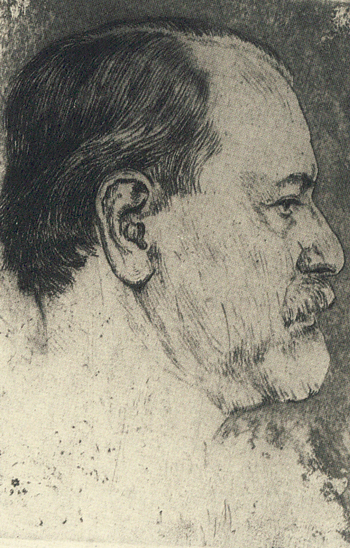
|
Hermann Struck
Portrait of Sigmund Freud
Etching, 1903 |
|
|
Sigmund Freud (1856-1939), the creator of psychoanalysis, was trained as a physician. Having been awarded a travel grant to Paris in 1885, Freud became a student of the neurologist Jean Charcot at the Salpetrière mental clinic in Paris, where he began studying clinical manifestations of organic diseases of the nervous system. This experience strengthened Freud's resolve to further explore the phenomena of hysterical paralysis. Upon his return to Vienna, Freud began working with his friend Josef Breuer. In 1895 they co-authored Studien über Hysterie [Studies on Hyateria], in which they formulated the theory that the repression of emotions in the unconscious could produce symptoms of hysterical illness. Discharging this emotion and the accompanying fantasy would cure the symptoms. After 1897 Freud began utilizing his own theories on himself in a painstaking self-analysis, mainly through his dreams. Out of this effort came the seminal work Die Traumdeutung [The Interpretation of Dreams] in 1900. After World War I followed further theoretical publications, Jenseits des Lustprinzips (1922) [Beyond the Pleasure Principle], Massenpsychologie und Ich-Analyse [Group Psychology and the Analysis of the Ego ](1922), and Das Ich und das Es [The Ego and the Id] (1927), all of which contributed to the theoretical understanding of human psychology. After the Nazi occupation of Vienna, in 1938, Freud and his daughter Anna, a child psychologist, escaped to London. |